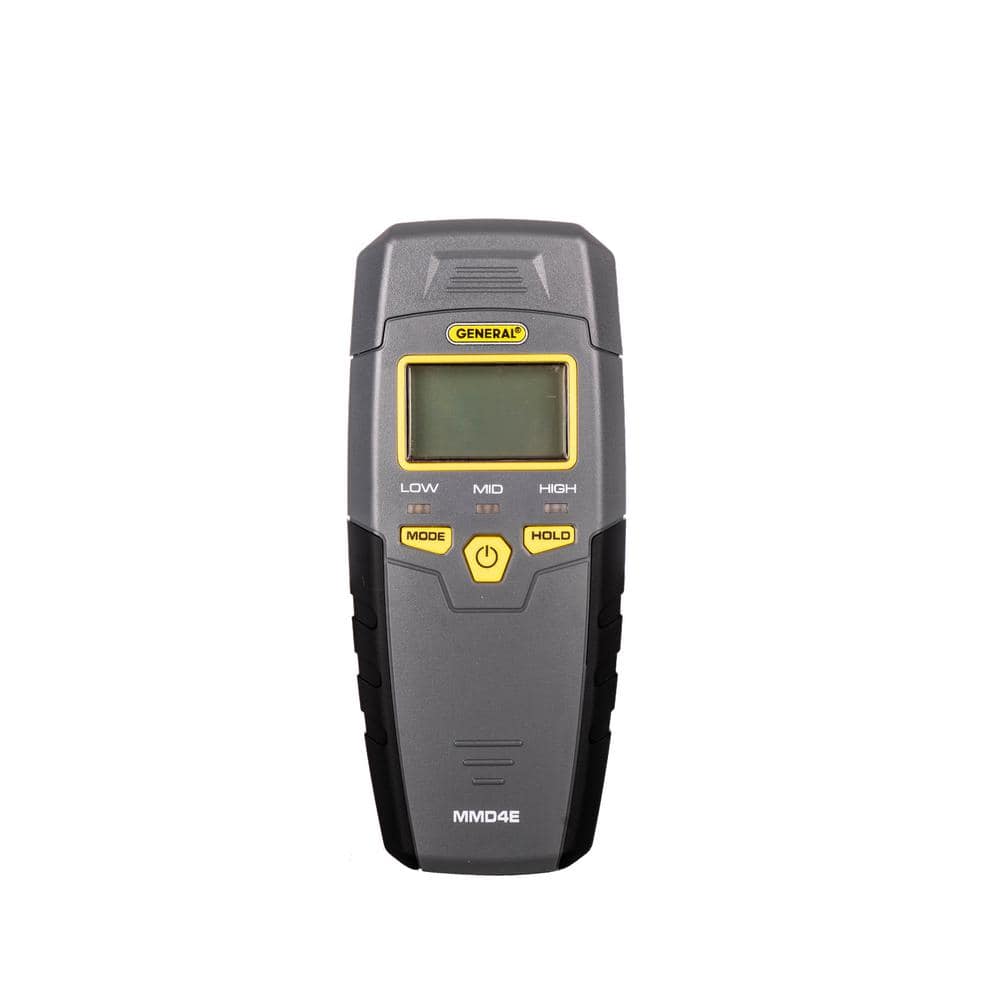The Ultimate Overview to Choosing the Right Moisture Meter for Your Needs
The Ultimate Overview to Choosing the Right Moisture Meter for Your Needs
Blog Article
Delve Into the World of Moisture Meters: Whatever You Need to Know
In the world of dampness meters lies a globe of accuracy and practicality that frequently goes unnoticed. Comprehending just how moisture meters operate, the different types available, and their diverse uses can lose light on their value in making sure top quality and effectiveness.
Exactly How Moisture Meters Work
Wetness meters run by measuring the electric conductivity or capacitance of products to establish the moisture web content existing - Moisture Meter. These meters are vital tools throughout different industries, including building and construction, agriculture, and woodworking. By using different techniques such as pin-type or pinless innovation, dampness meters provide precise analyses that aid professionals make educated choices
Pin-type moisture meters work by putting the sharp pins into the material being checked. On the various other hand, pinless dampness meters use electro-magnetic signals to check a bigger area without causing any damage to the product's surface.
No matter of the technique utilized, wetness meters play a vital duty in preventing problems such as mold and mildew development, architectural damage, or product problems brought on by excess wetness. Comprehending just how these meters job is essential for guaranteeing the high quality and stability of products in numerous applications.
Kinds Of Wetness Meters
Offered the critical function moisture meters play in various industries, it is crucial to recognize the various types available to professionals for accurately evaluating wetness levels. There are mostly two main kinds of wetness meters: pin-type and pinless moisture meters.
Pin-type dampness meters use two pins that are put into the material being examined to gauge the electric resistance between them. This approach is typically used for timber, drywall, and other structure products. Pin-type meters offer precise analyses at particular midsts, making them suitable for determining moisture slopes.
On the various other hand, pinless moisture meters make use of electro-magnetic sensor plates to check a larger location of the material without causing any damages. This kind is appropriate for promptly scanning large areas and is frequently made use of for floor covering, walls, and ceilings. Pinless meters are practical for taking analyses on finished surfaces without leaving any visible marks.
Both kinds of dampness meters have their advantages and are chosen based on the certain needs of the job available. Recognizing the distinctions between these types is vital for specialists to make accurate moisture evaluations.
Applications Throughout Industries
Construction specialists rely on dampness meters to analyze the wetness levels in building products like drywall, concrete, and timber, which is crucial for preserving structural integrity and protecting against issues like rot or mold. The floor covering market utilizes wetness meters to determine the wetness material in subfloors prior to setting up numerous flooring coverings, stopping expensive damages due to excess wetness. In the food sector, wetness meters are made use of to monitor and regulate moisture degrees in products such as grains, nuts, and dried fruits to keep freshness and quality.
Tips for Utilizing Wetness Meters
Make use of the dampness meter's calibration setups to guarantee accurate readings when measuring the wetness material in numerous materials. In addition, make certain the meter is set to the appropriate wetness variety for the product you are determining to acquire the most exact results.

When using a pin-type wetness meter, place the pins to the suitable depth recommended for the material being examined. This guarantees that the moisture readings are drawn from the appropriate depth within the material, providing a more accurate depiction of its moisture content. For pinless wetness meters, keep in mind to maintain proper call with the material's surface to obtain trusted analyses.

Routinely examine and replace the batteries in your dampness meter to stop inaccurate analyses because of low power. Shop the meter in a safe and completely dry place when try here not in usage to extend its life-span and preserve its precision. By following these pointers, you can make best use of the performance of your dampness meter and obtain exact moisture material dimensions across various products.

Maintenance and Calibration
To guarantee the accuracy of dampness web content dimensions, regular maintenance and calibration of the wetness meter are important steps in its proper functioning. Calibration changes the wetness meter to make certain that it provides trustworthy and regular outcomes.
Calibration should be executed occasionally, specifically if the wetness meter is utilized frequently or in crucial applications where precise dimensions are needed. By adjusting the wetness and maintaining meter routinely, customers can rely on the accuracy of the wetness content dimensions acquired.
Final Thought
To conclude, moisture meters play a critical duty in different industries by properly determining the moisture web content of products. Understanding just how these gadgets work, the various types readily available, and appropriate maintenance and calibration are this hyperlink necessary for acquiring reputable results. Whether in manufacturing, agriculture, or building and construction, making use of moisture meters aids guarantee top quality control and performance in processes.
Building professionals count on wetness meters to evaluate the moisture levels in structure materials like drywall, timber, and concrete, which is essential for keeping architectural stability and avoiding concerns like rot or mold. The floor covering industry uses moisture meters to gauge the moisture web content in subfloors before mounting different flooring coverings, protecting against costly problems due to excess moisture.Use the dampness meter's calibration settings to ensure precise analyses when gauging the wetness content in numerous materials. By complying with these suggestions, you can make the most of the efficiency of your moisture meter and acquire specific moisture material dimensions across different materials.
In verdict, wetness meters play an essential function in various markets by precisely gauging the wetness web content helpful hints of products.
Report this page